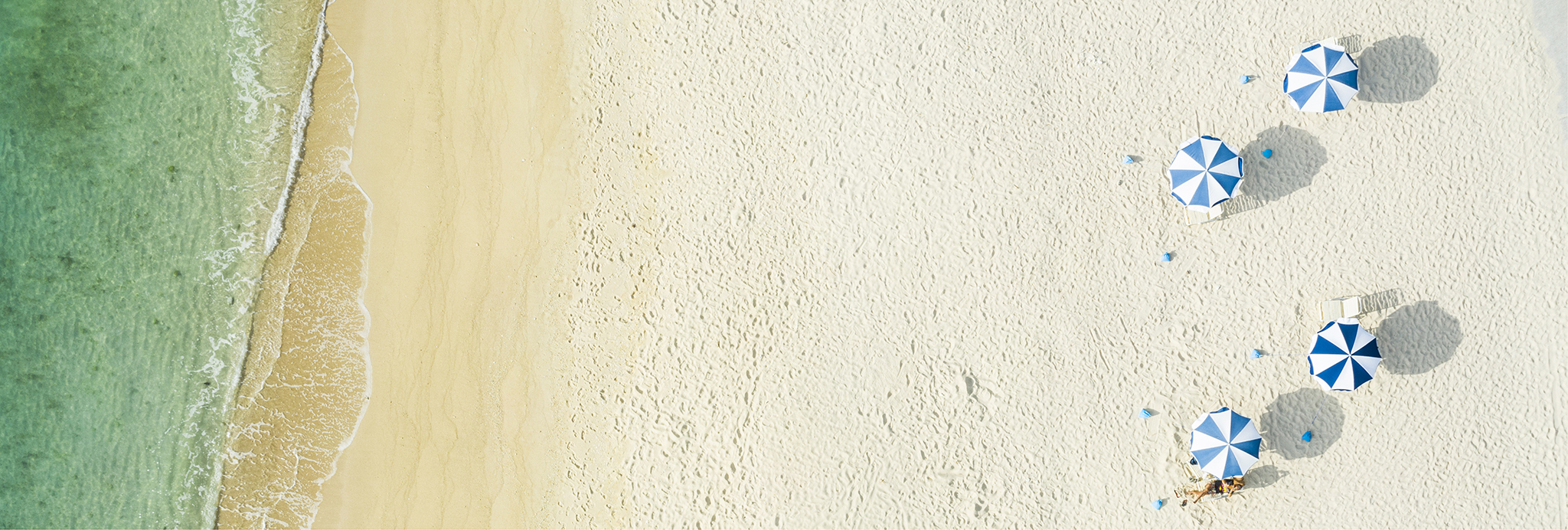
D Summer sun at one of Okinawa’s tropical white-sand beaches.
夏
summer
Festivals, fun, and family
The musky aroma of mosquito coils, the relentless humming of cicada, parasols to cast some shade—welcome to Japanese summer. From late June, every conversation contains at least one sigh of “Atsui!” (hot), as the stickiness of the brief rainy season signals the change from spring to summer. By the time summer begins in earnest, it feels like the most used word in Japanese.
the mercury rises
In July and August, temperatures away from the mountains frequently top 95°F (35°C), sometimes reaching even higher in notoriously hot towns like Kumagaya in Saitama Prefecture. And when night cools, it often doesn’t feel much better, with the humidity rising into the 90 percent range after dark. Thankfully, Japan also has some short-term fixes with cooling seasonal food like kakigori—shaved ice topped with fruit- flavored syrup and condensed milk—and somen and other chilled noodles. Grilled corn, juicy watermelon, and chilled edamame are other summer staples, as is savoring a few cold beers at the rooftop beer gardens that pop up in cities all around Japan for summer only.
Summer Celebrations
When Japan reaches peak festival season in summer, no amount of heat and humidity stops the fun. The festivals vary wildly, but there are common traits: out come the colorful cotton yukata gowns, the street vendors selling fried noodles and kakigori, and the plastic fans people waft for scant relief. Many of the festivals celebrate Obon in mid-August, when the spirits of ancestors are said to return home, prompting family get-togethers and the hanging of lanterns to guide the spirits through the darkness.
In Kyoto, the whole balmy month of July is given to the thousand-year-old Gion Matsuri, its focal point a procession of huge floats in mid-July. The Awa-Odori festival in Tokushima on Shikoku and the smaller Tokyo version in Koenji (both in August) happily have the sense to wait until nightfall before teams of dancers and musicians take to the streets for several evenings of frenetic fun. And the hundreds of fireworks displays throughout the summer have no choice but to avoid the midday glare.
Beat the Heat
To escape the heat—or at least be somewhere it isn’t as hot—you could follow the Japanese to popular summer holiday destinations like Hokkaido in the far north, where winter ski areas like Niseko provide a cooler summer setting for hiking and other outdoor pursuits; head to the breezy Japanese Alps; or explore the less-visited Tohoku region’s farmland, rugged coastline, and mountain ranges. It might sound counterintuitive, but going to hot-spring resorts is popular, too. The air is often cooler there, and hanging out in traditional inns—in light yukata gowns and airy tatami-mat rooms—isn’t just refreshing; it’s a great way to recharge during the draining seasonal heat.
